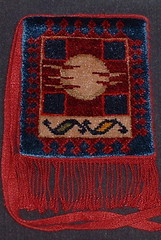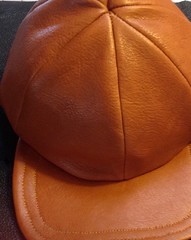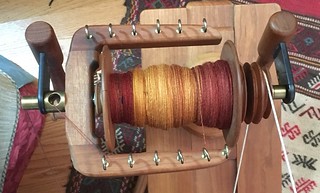Bingo!
Marta, in the comments last post, got it totally and completely right:
"It's okay to enjoy the process as much, maybe more, than the product."
The process in the whole point, really. Yes, I try to think of useful things to make, and things that will get used, mostly, not just piled up in a glass case.
But the making is the thing. The reason for doing all of this handwork. We all know we could buy socks cheaper, more quickly and more easily than make them, and yet? The making is the thing, not the having of the thing.
I also got one very cogent question by email:
Why do you finish things that are flawed? Aren't you always reminded of the flaws and the failure?
Well, true enough, we, most of us makers, have the habit of pointing out the flaws to anyone who stops to take notice, or compliment our work. But the making is learning not only how to make "flawless" (is there such a thing?), but also how to fix, repair, adjust and yes, sometimes just move on and ignore. A master craftsman is not one who makes no mistakes, a master is one who can repair mistakes so no one else knows they happened.
Repairs mistakes.
Big life lesson in that! Repair what we break. Repair what we don't make flawless the first (OK, second, third or tenth) time out. Learn. How to make, and how to make better.
Darn, mend, repair skips in weaving, accept a certain wobbliness and move on.

random photo of a bag, with mistakes! from my flickr site, so this post is not All Words
I realized this week, while making some minor mis-steps, that I do not ever make things that are metro-perfect, with modern clean lines and everything straight. My metier, if you will, is the off-kilter, the not-symmetrical, the hand-of-the-maker and the aesthetic of wabi-sabi. Bohemian, in current terms (a nice way of saying Old Hippie, if you ask me).
Realizing and accepting that makes all those funny corners, and crooked stitches so much easier to bear!
"It's okay to enjoy the process as much, maybe more, than the product."
The process in the whole point, really. Yes, I try to think of useful things to make, and things that will get used, mostly, not just piled up in a glass case.
But the making is the thing. The reason for doing all of this handwork. We all know we could buy socks cheaper, more quickly and more easily than make them, and yet? The making is the thing, not the having of the thing.
I also got one very cogent question by email:
Why do you finish things that are flawed? Aren't you always reminded of the flaws and the failure?
Well, true enough, we, most of us makers, have the habit of pointing out the flaws to anyone who stops to take notice, or compliment our work. But the making is learning not only how to make "flawless" (is there such a thing?), but also how to fix, repair, adjust and yes, sometimes just move on and ignore. A master craftsman is not one who makes no mistakes, a master is one who can repair mistakes so no one else knows they happened.
Repairs mistakes.
Big life lesson in that! Repair what we break. Repair what we don't make flawless the first (OK, second, third or tenth) time out. Learn. How to make, and how to make better.
Darn, mend, repair skips in weaving, accept a certain wobbliness and move on.

random photo of a bag, with mistakes! from my flickr site, so this post is not All Words
I realized this week, while making some minor mis-steps, that I do not ever make things that are metro-perfect, with modern clean lines and everything straight. My metier, if you will, is the off-kilter, the not-symmetrical, the hand-of-the-maker and the aesthetic of wabi-sabi. Bohemian, in current terms (a nice way of saying Old Hippie, if you ask me).
Realizing and accepting that makes all those funny corners, and crooked stitches so much easier to bear!







